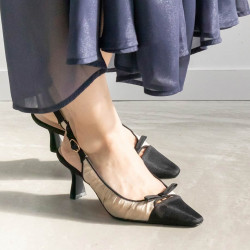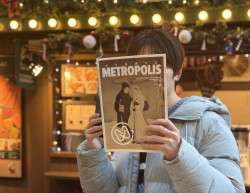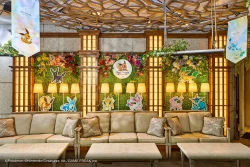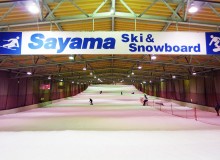
September 3, 2009
Weekends are for Racing
A Daytrip to Tokyo Racecourse offers fun, excitement—and a definite break from the ordinary
By Metropolis
Originally published on metropolis.co.jp on September 2009

The weekend is here, and you’re hankering to get out and get moving. But the thought of another afternoon mingling with the regulars in Yoyogi just doesn’t excite you. So when the sun is shining and the Tokyo crowds are out in force, where’s an expat to go? To the horse races, of course!
 Tokyo Racecourse is probably one of the last places you’d think about hanging out on the weekend—unless you’re old, lonely, and have some extra cash to toss away. Even as you head out to the track on the train from Shinjuku, such stereotypes spring to mind, as the carriage fills up with what looks like a field trip for stray salarymen. Newspapers and red pens in hand, they dutifully study lines of tiny race info and plan out their bets for the day. This does not look like the most amicable crowd in Tokyo.
Tokyo Racecourse is probably one of the last places you’d think about hanging out on the weekend—unless you’re old, lonely, and have some extra cash to toss away. Even as you head out to the track on the train from Shinjuku, such stereotypes spring to mind, as the carriage fills up with what looks like a field trip for stray salarymen. Newspapers and red pens in hand, they dutifully study lines of tiny race info and plan out their bets for the day. This does not look like the most amicable crowd in Tokyo.
All that changes, though, once you get off the train at Fuchukeiba Seimon-mae station, and the herd of oyaji dissipate into a crowd that’s surprisingly mixed with families, couples and groups of friends. More reminiscent of a festival than a scene from a yakuza movie, Tokyo Racecourse swiftly and easily takes all those stereotypes about “heading to the races” and turns them upside-down.
 Stepping out of the station and strolling down the long pedestrian bridge to the track’s entrance, visitors are swallowed into a park-like area that has the feeling of a college campus. The grounds are huge, immaculate and soothing, with shady avenues and the sounds of birds chirping (real ones, not those unnerving recordings from your local shotengai!).
Stepping out of the station and strolling down the long pedestrian bridge to the track’s entrance, visitors are swallowed into a park-like area that has the feeling of a college campus. The grounds are huge, immaculate and soothing, with shady avenues and the sounds of birds chirping (real ones, not those unnerving recordings from your local shotengai!).
An entry fee of just ¥200 gets you through the door and gives you access to almost all the facilities and activities the racecourse has to offer. Whether you’re there for business (that is, betting) or leisure, stop by the information desk first thing and pick up all the English goodies that the Japan Racing Association (JRA) has on offer, including maps, guides and betting-card overlays.
 Indispensible for racing newbies is JRA’s English “How To Bet” pamphlet. Even if you show up at the track without an experienced friend to guide you through the process, a quick read through the first ten pages of the booklet is enough to set most people straight. The hardest part—deciding which horse to bet on—is yet to come.
Indispensible for racing newbies is JRA’s English “How To Bet” pamphlet. Even if you show up at the track without an experienced friend to guide you through the process, a quick read through the first ten pages of the booklet is enough to set most people straight. The hardest part—deciding which horse to bet on—is yet to come.
With betting card in hand, it’s time to head for the stands. The main Fujiview Grandstand, combined with the connected Memorial 60 Grandstand, is an enormous ten-story complex that’s like a cross between a gleaming airport terminal and a Las Vegas shopping mall. Stretching for what seems like miles, this coliseum-like hub offers race-goers a number of venues to chow down, shop or just lounge around. It also has what may be the largest public seating area in Greater Tokyo, with benches, chairs and tables filling open spaces and lining hallways. This is the perfect place to kick back and relax, or take a hint from the locals and give some intense study to that betting guide and race info.
Betting doesn’t vary a whole lot from country to country, so if you have previous track experience, rest assured that all the quinellas, exactas and trifectas are the same as they are overseas. Even if those terms are Greek to you, just open up to the first few pages of “How To Bet” while filling out the betting card. Using the handy English overlay, you’ll gain assurance that you’re not throwing your yen into the abyss. The process is a simple and, in fact, fun exercise in weighing logic and deduction against luck.







